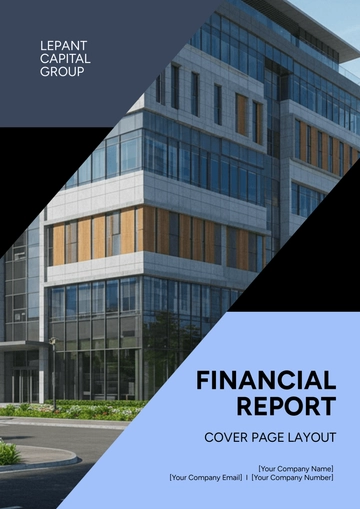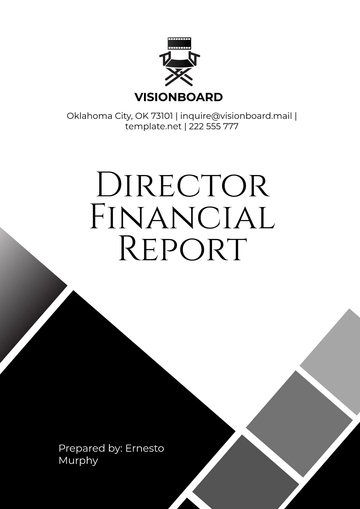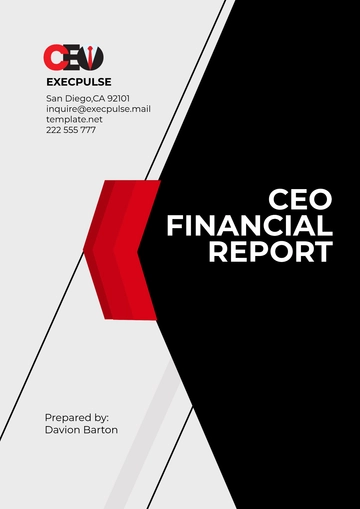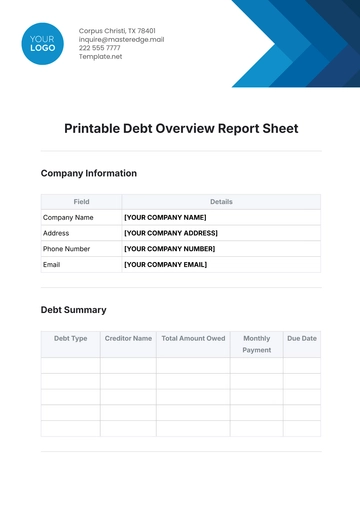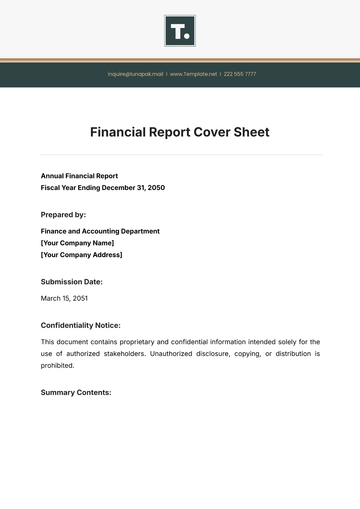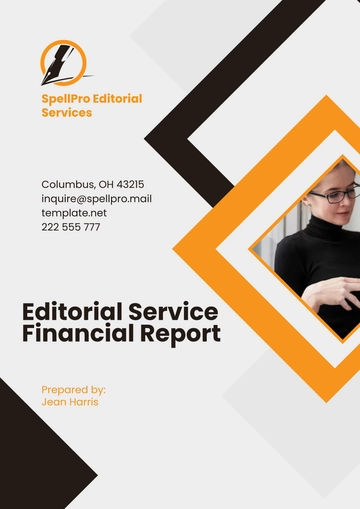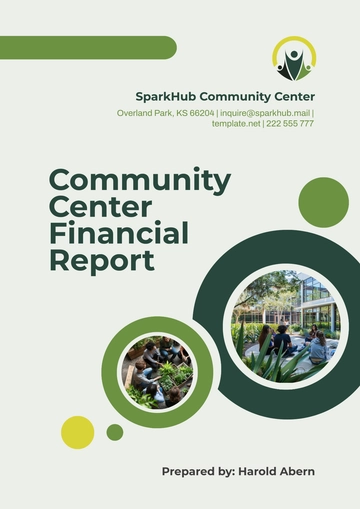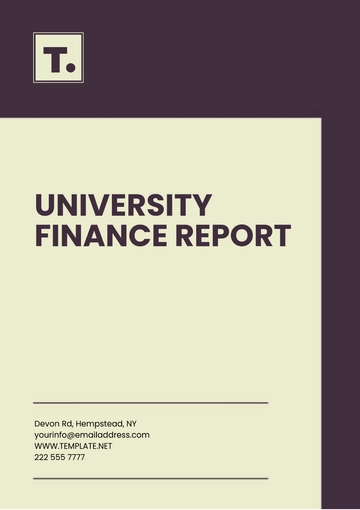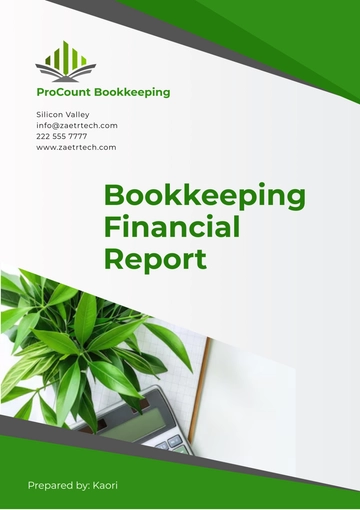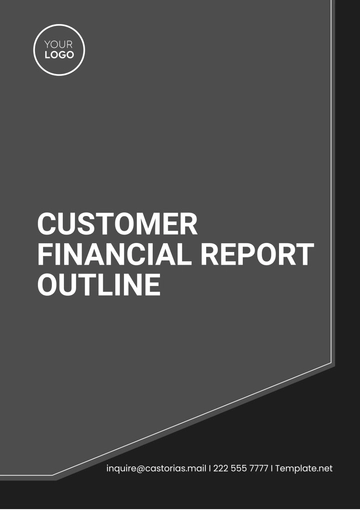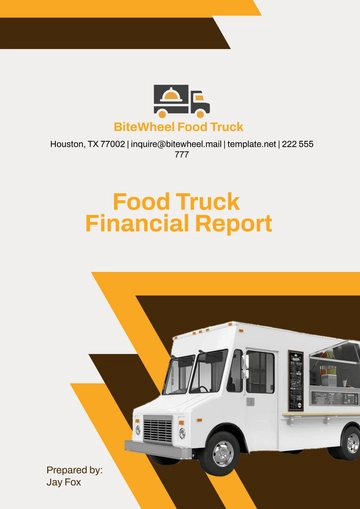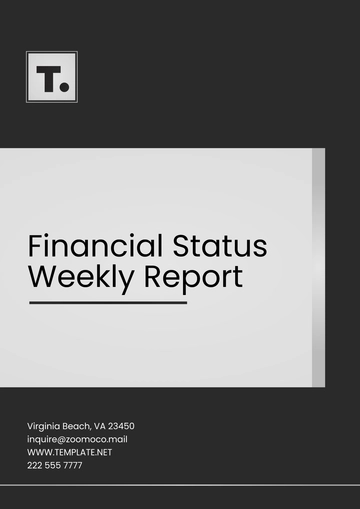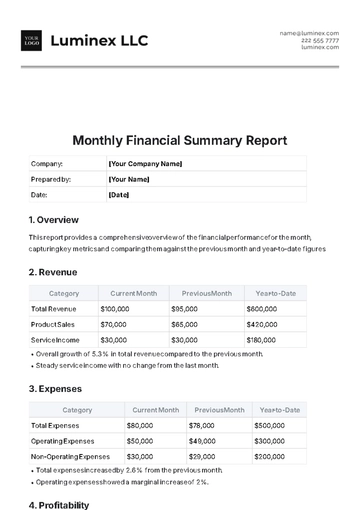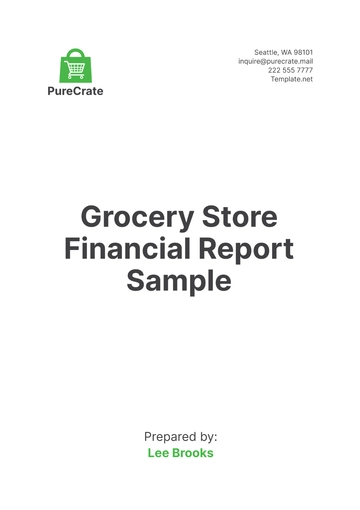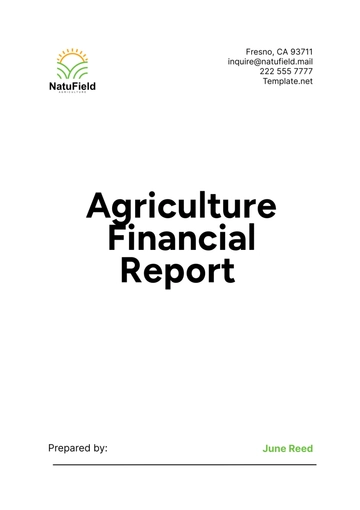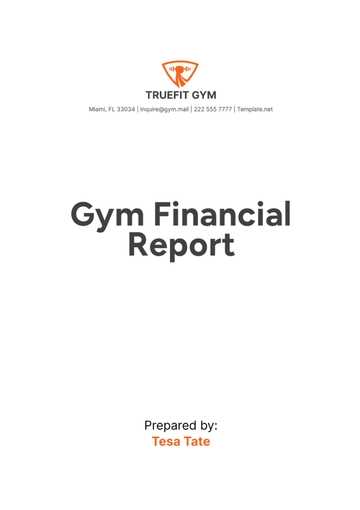Free Financial Reporting Feasibility Study
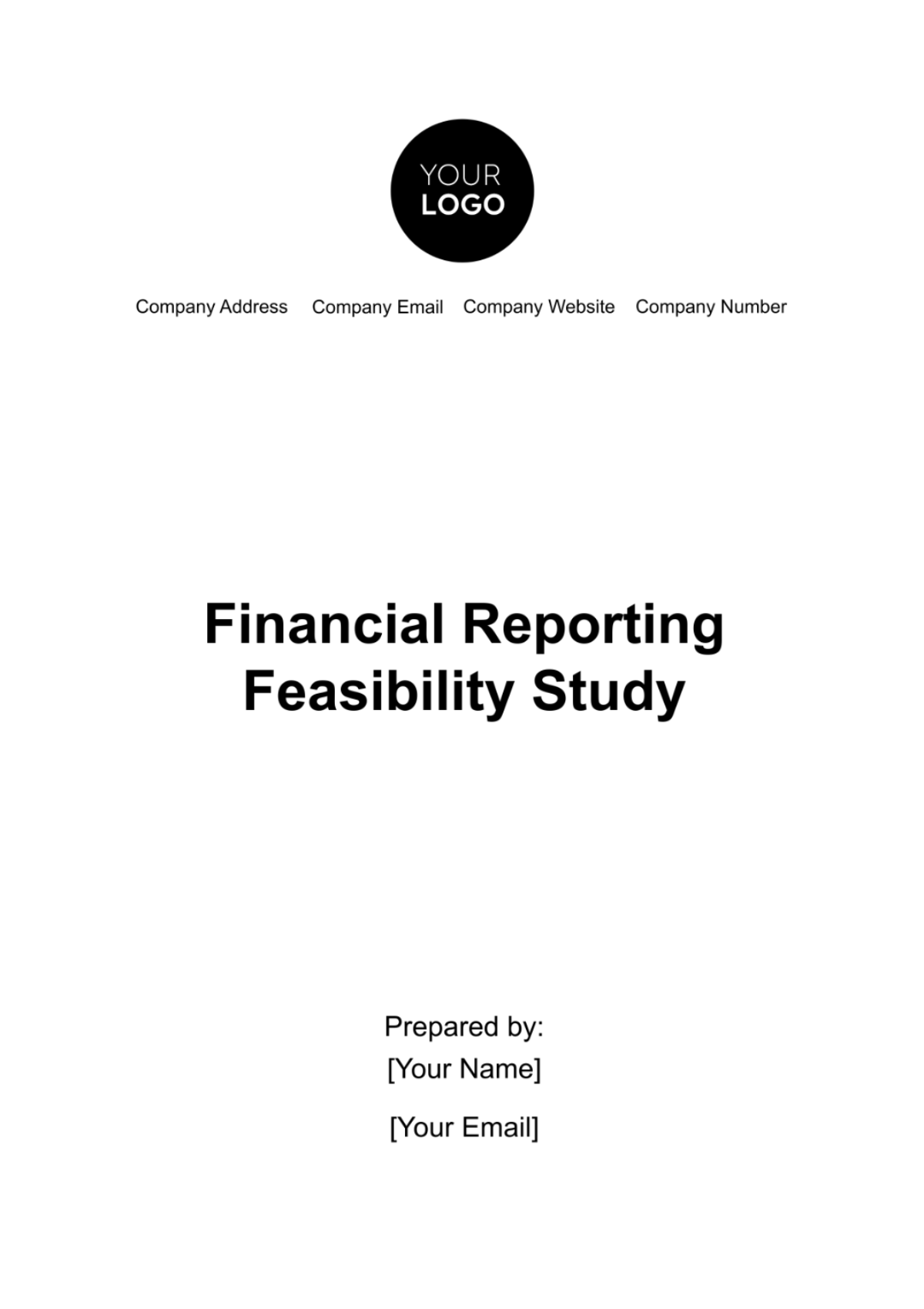
Executive Summary
This feasibility study presents an evaluation of the prospects for introducing an advanced financial reporting system at [Your Company Name]. Our aim is to significantly enhance the accuracy, transparency, and compliance of our financial operations with the latest regulatory standards. The need for this upgrade stems from the evolving complexities in financial transactions, the increasing demands of stakeholders for transparent reporting, and the stringent compliance requirements imposed by financial regulators. The current financial reporting processes at [Your Company Name], while adequate, are not equipped to effectively handle the growing scale and complexity of our financial operations. This has necessitated a thorough examination of our existing system and the exploration of more sophisticated alternatives.
Business Overview
About [Your Company Name]: Founded in [Year], [Your Company Name] has established itself as a key player in [Industry/Market Sector]. Our core business revolves around manufacturing electronic components, providing software solutions, and retailing consumer goods. With a commitment to innovation and quality, [Your Company Name] has consistently delivered products/services that exceed customer expectations, propelling us to a leading position in the market.
Our Mission:
To deliver exceptional value to our customers through innovative solutions, superior quality products/services, and a relentless focus on customer satisfaction.
Our Vision:
To be the preferred choice in our industry, recognized for our innovative approach, ethical practices, and contribution to sustainable development.
Key Products/Services:
Innovative Software Solutions: We specialize in providing cutting-edge software solutions, tailored to streamline business operations. Our software suite includes tools for data analytics, customer relationship management, and automated marketing, designed to optimize business efficiency and productivity.
Advanced Manufacturing Equipment: Our range of manufacturing equipment sets industry standards for quality and reliability. From automated assembly lines to precision machining tools, we offer solutions that cater to diverse manufacturing needs, ensuring high productivity and minimal downtime.
Sustainable Energy Products: In line with our commitment to sustainability, we offer a variety of eco-friendly energy products, including solar panels and wind turbines. These products are designed to reduce environmental impact while providing cost-effective energy solutions to our clients.
Market Presence: With operations spanning across North America, Europe, and Asia, [Your Company Name] boasts a robust global presence. This is supported by a network of strategic partnerships with industry leaders, a well-established supply chain ensuring efficient product distribution, and a strong, loyal customer base that spans various industries.
Key Achievements:
[Industry Excellence Award 2050]: Recognized for our innovative contributions to the tech sector, [Your Company Name] was awarded the prestigious [Industry Excellence Award in 2050].
Expansion to [European Market]: In [2050], we achieved a significant milestone by successfully expanding our operations into the [European] market, marking a crucial step in our global business strategy.
Collaboration with Tech Giant [Company Name]: Our recent collaboration with [Company Name] in [2050] has been a noteworthy achievement, paving the way for groundbreaking developments in smart technology and IoT devices.
Financial Reporting Needs
Current Systems:
Our current financial reporting systems involve a mix of automated and manual processes, primarily relying on traditional accounting software and spreadsheet tools. This system, while functional, has limitations in handling complex financial data and generating real-time reports.
Required Improvements:
Speed: Upgrading to more efficient software that can handle real-time data processing and report generation, minimizing delays in financial decision-making.
Accuracy: Implementing advanced data validation tools and AI-driven error detection systems to reduce human errors and ensure the precision of financial reports.
Compliance: Ensuring the new system is adaptable to changing regulatory requirements, including international financial reporting standards and local tax laws.
Scalability: The system should be scalable to accommodate future business growth, capable of handling increased transaction volumes and diversified financial operations without compromising performance.
Key Stakeholders:
Internal Stakeholders: This includes the finance team, management, and board members who rely on accurate financial reports for decision-making.
External Stakeholders: External auditors, regulatory bodies, investors, and creditors who require transparent and compliant financial reporting for trust and investment decisions. The upgrade of our financial reporting systems is thus not just a technical improvement but a strategic move to align with our broader business goals of efficiency, transparency, and scalability.
Feasibility Analysis
This analysis covers three crucial aspects: technical feasibility, economic feasibility, and legal feasibility. The aim is to determine the viability of the upgrade in terms of technology, cost-effectiveness, and compliance with legal standards. This structured approach will guide our decision-making process, ensuring that the upgrade is both practical and beneficial for our business.
Technical Feasibility Assessment:
Conducts a thorough examination of the upgrade's integration within the existing technological infrastructure.
Assesses the compatibility with extant systems and the potential to augment operational efficiency.
Evaluates the availability of requisite technical expertise for the successful implementation and sustained maintenance of the upgrade.
Economic Feasibility Analysis:
Undertakes a comprehensive cost-benefit analysis, encompassing initial capital outlay and ongoing operational expenses.
Scrutinizes the expected return on investment to ascertain fiscal prudence and viability.
Aligns the financial implications of the upgrade with the organization's fiscal parameters and strategic financial goals.
Legal Feasibility Review:
Ensures stringent compliance with all pertinent regulatory standards, legal mandates, and ethical norms.
Proactively mitigate legal risks, thereby safeguarding the organization from potential litigations and reputational harm.
Diligently verifies adherence to both domestic and international legal frameworks, maintaining the legal integrity of the upgrade.
This Feasibility Analysis employs a rigorous and methodical approach, critically evaluating the proposed upgrade across technical, economic, and legal facets. This exhaustive assessment is instrumental in facilitating an informed and strategic decision-making process, ensuring the upgrade's practicality, fiscal responsibility, and compliance with legal statutes, thus significantly contributing to the enhanced performance and success of the organization.
Market Analysis
Industry Trends:
Key trends include the increasing adoption of AI and machine learning for predictive analytics, real-time financial reporting, and the integration of non-financial indicators such as environmental, social, and governance (ESG) factors into traditional financial reports.
Additionally, there's a growing emphasis on cloud-based solutions for greater accessibility and security. These trends highlight a shift towards more dynamic, comprehensive, and transparent financial reporting practices in the industry.
Competitor Analysis:
Leading players in our sector have already transitioned to advanced, AI-driven financial systems, enabling them to provide more accurate and timely financial insights. Others still rely on traditional methods but are gradually integrating modern tools.
This analysis underscores the competitive advantage of adopting sophisticated financial reporting systems, particularly in terms of efficiency, accuracy, and strategic decision-making.
Regulatory Environment:
The regulatory environment for financial reporting is increasingly stringent, with a focus on enhancing transparency and accountability. Key regulations include the International Financial Reporting Standards (IFRS), the Sarbanes-Oxley Act (SOX) for U.S.-based companies, and the General Data Protection Regulation (GDPR) for data privacy and security. These regulations mandate rigorous financial disclosure, audit requirements, and data protection measures.
Financial Feasibility
This projection spans over the first three years post-implementation, starting from 2050. The aim is to provide a realistic forecast of the costs associated with the upgrade, the anticipated financial benefits, and the resultant net benefit to the company. These projections are crucial for understanding the financial impact and return on investment of the project.
Financial Projections Overview:
Cost Factor | Estimated Cost |
|---|---|
Software Purchase | $85,000 |
Implementation | $XX,XXX |
Training | $X,XXX |
Maintenance | $X,XXX per year |
Implementation Plan
The implementation of the new financial reporting system for [Your Company Name] is a structured process designed to ensure a smooth transition and minimal disruption to our ongoing operations. This plan outlines the key milestones and the timeline for each phase of the implementation.
Key Considerations:
Software Selection:
Involves evaluating various software options to find the best fit in terms of features, scalability, and cost.
Hardware Setup:
Ensures that all the necessary technical infrastructure is in place and functioning optimally.
Staff Training:
Focused on providing employees with the skills and knowledge required to effectively use the new system.
Full Implementation:
Marks the transition to the new system, including final testing and going live.
The implementation plan is designed to be flexible, allowing for adjustments as needed while maintaining focus on the end goal of a fully operational, efficient financial reporting system. Regular progress reviews will be conducted to ensure alignment with the timeline and successful achievement of each milestone.
Conclusion
Thi analysis demonstrates that the adoption of an advanced financial reporting system for [Your Company Name] is not only achievable but also distinctly advantageous. By integrating this system, the company will be positioned to consistently adhere to regulatory standards, significantly elevate the quality of its decision-making processes, and markedly augment its financial transparency.
- 100% Customizable, free editor
- Access 1 Million+ Templates, photo’s & graphics
- Download or share as a template
- Click and replace photos, graphics, text, backgrounds
- Resize, crop, AI write & more
- Access advanced editor
Unveiling Template.net's editable Financial Reporting Feasibility Study Template! Dive into the world of financial analysis with confidence using our meticulously designed document. It's the ultimate resource for professionals looking to evaluate project financial viability. With intuitive features such as our AI editor tool for easy editing and customization together with in-depth sections, this template empowers you to streamline complex data effortlessly.
You may also like
- Sales Report
- Daily Report
- Project Report
- Business Report
- Weekly Report
- Incident Report
- Annual Report
- Report Layout
- Report Design
- Progress Report
- Marketing Report
- Company Report
- Monthly Report
- Audit Report
- Status Report
- School Report
- Reports Hr
- Management Report
- Project Status Report
- Handover Report
- Health And Safety Report
- Restaurant Report
- Construction Report
- Research Report
- Evaluation Report
- Investigation Report
- Employee Report
- Advertising Report
- Weekly Status Report
- Project Management Report
- Finance Report
- Service Report
- Technical Report
- Meeting Report
- Quarterly Report
- Inspection Report
- Medical Report
- Test Report
- Summary Report
- Inventory Report
- Valuation Report
- Operations Report
- Payroll Report
- Training Report
- Job Report
- Case Report
- Performance Report
- Board Report
- Internal Audit Report
- Student Report
- Monthly Management Report
- Small Business Report
- Accident Report
- Call Center Report
- Activity Report
- IT and Software Report
- Internship Report
- Visit Report
- Product Report
- Book Report
- Property Report
- Recruitment Report
- University Report
- Event Report
- SEO Report
- Conference Report
- Narrative Report
- Nursing Home Report
- Preschool Report
- Call Report
- Customer Report
- Employee Incident Report
- Accomplishment Report
- Social Media Report
- Work From Home Report
- Security Report
- Damage Report
- Quality Report
- Internal Report
- Nurse Report
- Real Estate Report
- Hotel Report
- Equipment Report
- Credit Report
- Field Report
- Non Profit Report
- Maintenance Report
- News Report
- Survey Report
- Executive Report
- Law Firm Report
- Advertising Agency Report
- Interior Design Report
- Travel Agency Report
- Stock Report
- Salon Report
- Bug Report
- Workplace Report
- Action Report
- Investor Report
- Cleaning Services Report
- Consulting Report
- Freelancer Report
- Site Visit Report
- Trip Report
- Classroom Observation Report
- Vehicle Report
- Final Report
- Software Report
